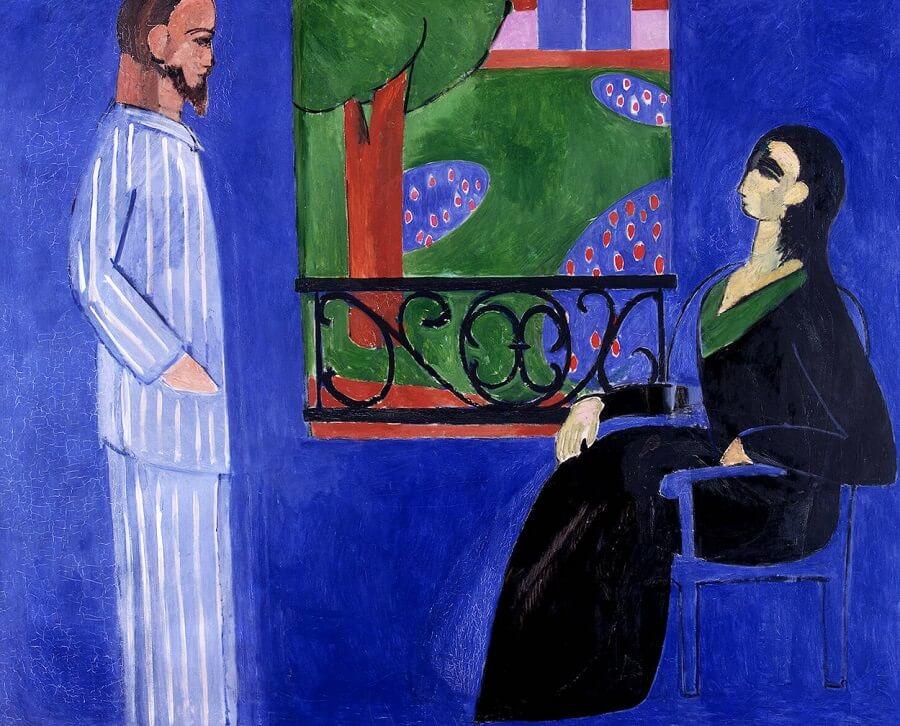Henri Matisse is one of the most well-known artists from the early 20th century. His story is an interesting one because he didn’t always have an interest in art! This makes his perspective unique; since he learned art later on, he purposely sought out contemporary artists for inspiration and an understanding of artistic fundamentals.
He quickly jumped into the deep end of art creation and went from a complete beginner to a masterful artist in a short period of time, leaving us with many amazing paintings to study and admire.
Discover 10 of the most famous Matisse paintings you need to know about!

Woman Reading (La Liseuse)
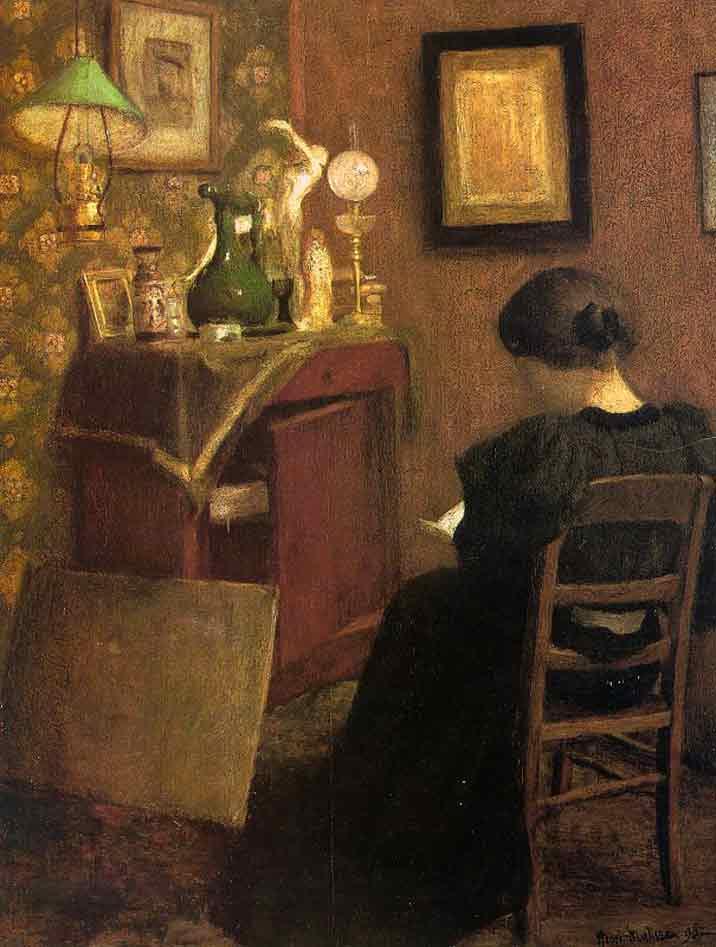
Without seeing these early works from Matisse, it’s easy to decide that the reason he painted so lawlessly was because he had less control over his hands and paintbrush than other artists.
But, with the context that Matisse first studied typical contemporary art with well-renowned teachers, it’s clear that his wild exploration of colour, texture, negative space, and composition is entirely intentional.
Only once you know and understand the rules can you break them!
Woman with a Hat (Femme au chapeau)

Woman with a Hat is one of Matisse's most recognisable works, and it shocked audiences when it was unveiled at the Salon d’Automne as a Fauvist revelation. The unnatural colours and expressive, unfinished strokes which barely respect real-life forms, were highly unusual at the time.
The titular woman is Matisse's wife, Amélie. The portrait caused so much of a stir with critics so as to be called a controversy. It was called “infantile” and dismissed as “madness” by many, especially because the positioning and outfit of Mrs. Matisse suggest a high-society portrait, with the execution being anything but.
The Green Stripe (Madame Matisse)

The Green Stripe is one of Matisse's most quintessential Fauvist pieces from the height of the artistic movement. This painting is particularly interesting because of the way it breaks with the traditional approaches artists usually painted women.
Some art historians even suggest that it challenges traditional gender norms in the way that Matisse painted a picture of his wife using bold colours to emphasise strength and individuality, rather than focusing on typically feminine standards of beauty from the time.
As one of the earliest examples of Matisse's works in Fauvism, The Green Stripe is a wonderful example of how the artist was willing to break away from artistic norms, which would help inspire future generations of artists.
My paintings consist of four or five colors which clash with one another expressively. When I apply green, that does not mean grass. When I apply blue, that does not mean sky. It is their accord or their opposition which opens in the viewer’s mind an illusory space.
Henri Matisse
The Open Window (La fenêtre ouverte)

Also known as Open Window, Collioure, it’s evident that the piece is Fauvist, but with Pointilist elements, which was another type of art style that Matisse was interested in exploring. The combination of different types of brushstrokes with bold, unrealistic colours creates an interesting composition.
The Joy of Life (Le bonheur de vivre)

Typical of the Fauvist movement, the piece featured non-naturalistic colours and bold brushwork that one could say “offends” the viewer.
As a perennial art student, Matisse used his art, especially this piece, to experiment with forms while also taking inspiration from past Renaissance masters like Titian and Ingres. In The Joy of Life, Matisse takes these classical themes while exploring them through a Fauvist lens.

Blue Nude (Nu bleu, Souvenir de Biskra)
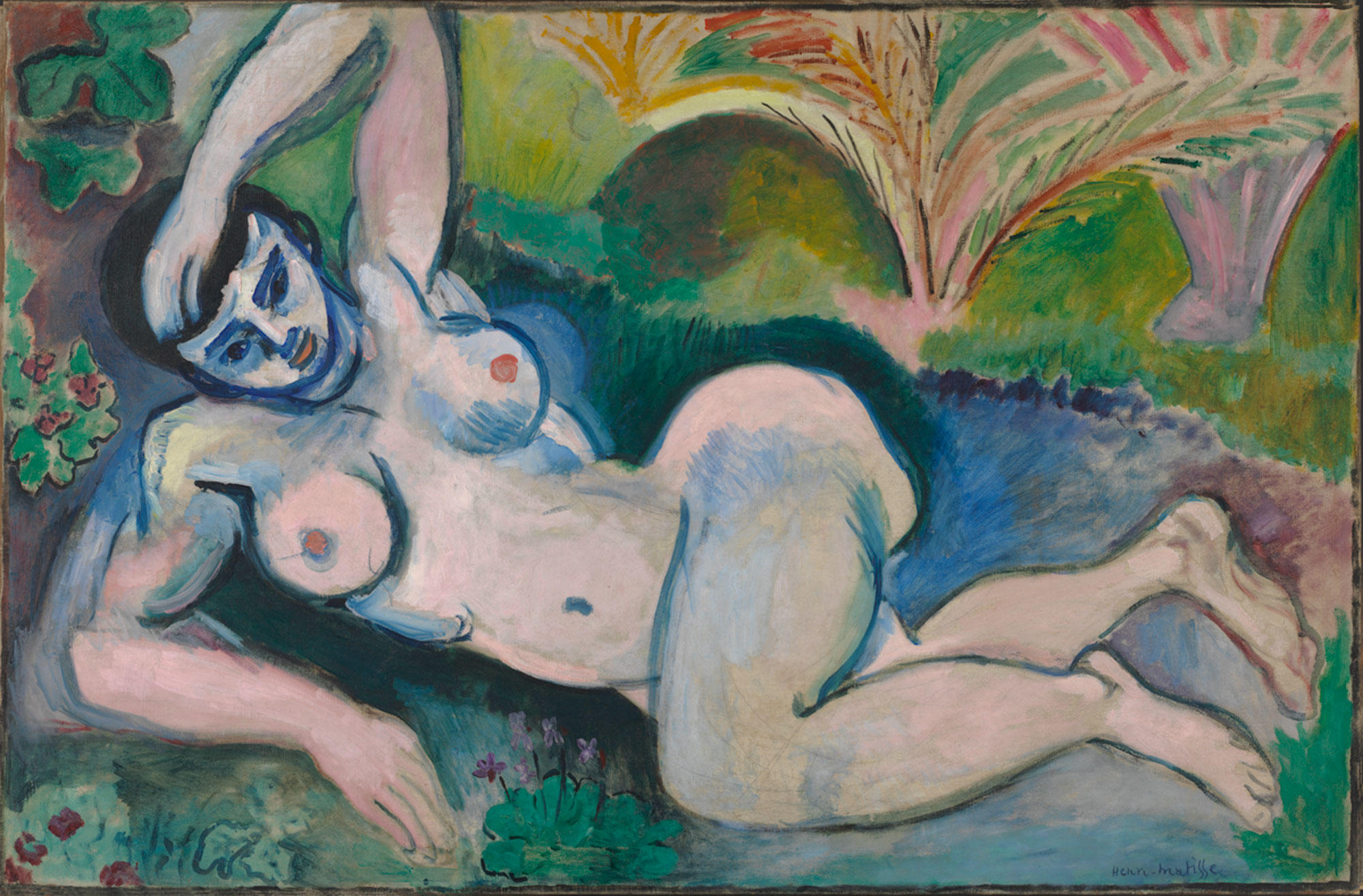
Unimpressed by the demure and repetitive nudes being shown at the Salon in Paris, and instead intrigued by a sculpture from Africa, Matisse created this nude work, to the shock and horror of art critics in the West.
An effigy of the painting was even burned in Chicago because of how affronting people found it.
Matisse created many Blue Nude artworks in his lifetime including many Matisse drawings; it was a theme he kept exploring.
I do not literally paint that table, but the emotion it produces upon me.
Henri Matisse
The Red Room (Le Dessert: l'harmonie en rouge (la salle rouge))
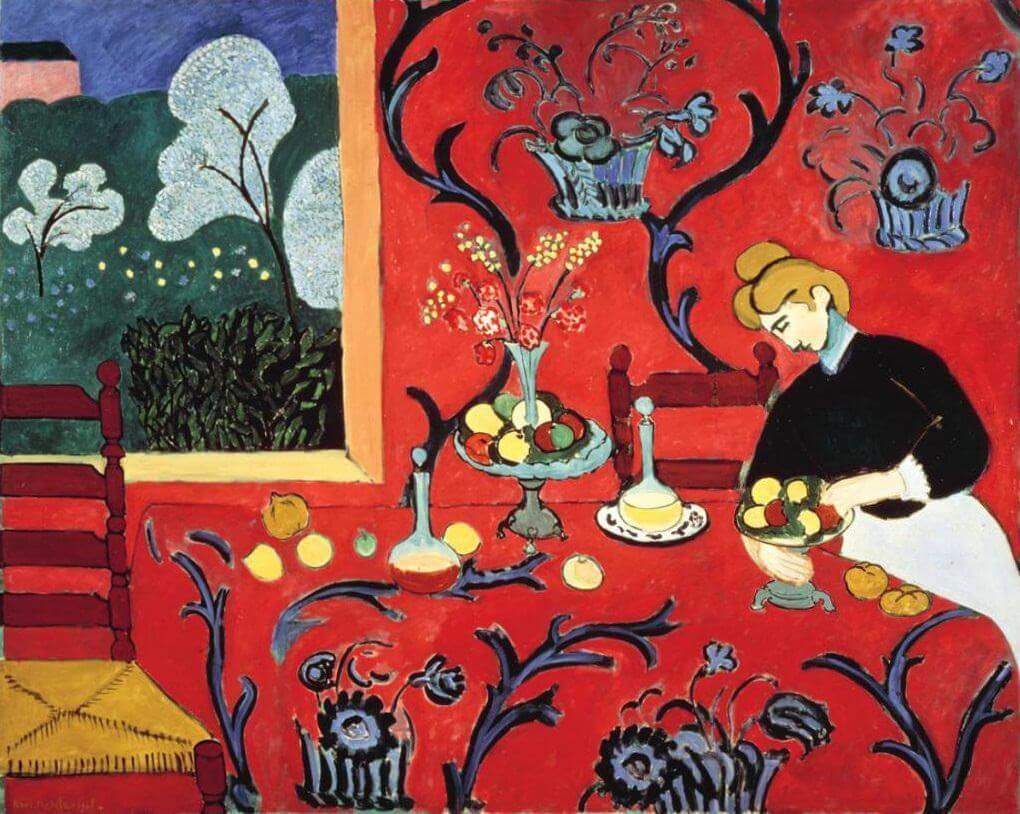
Also known as The Dessert: Harmony in Red, Matisse experimented with the colour of the background before deciding red was the way to go. The composition and colour are more evidence that Matisse was moving away from Fauvism because even though the colours are bright and bold and the perspective is not exactly realistic, it’s more tame than his definitive Fauvist works.
Check out Brisbane painting classes to learn how to paint like Matisse.
Dance (La danse)
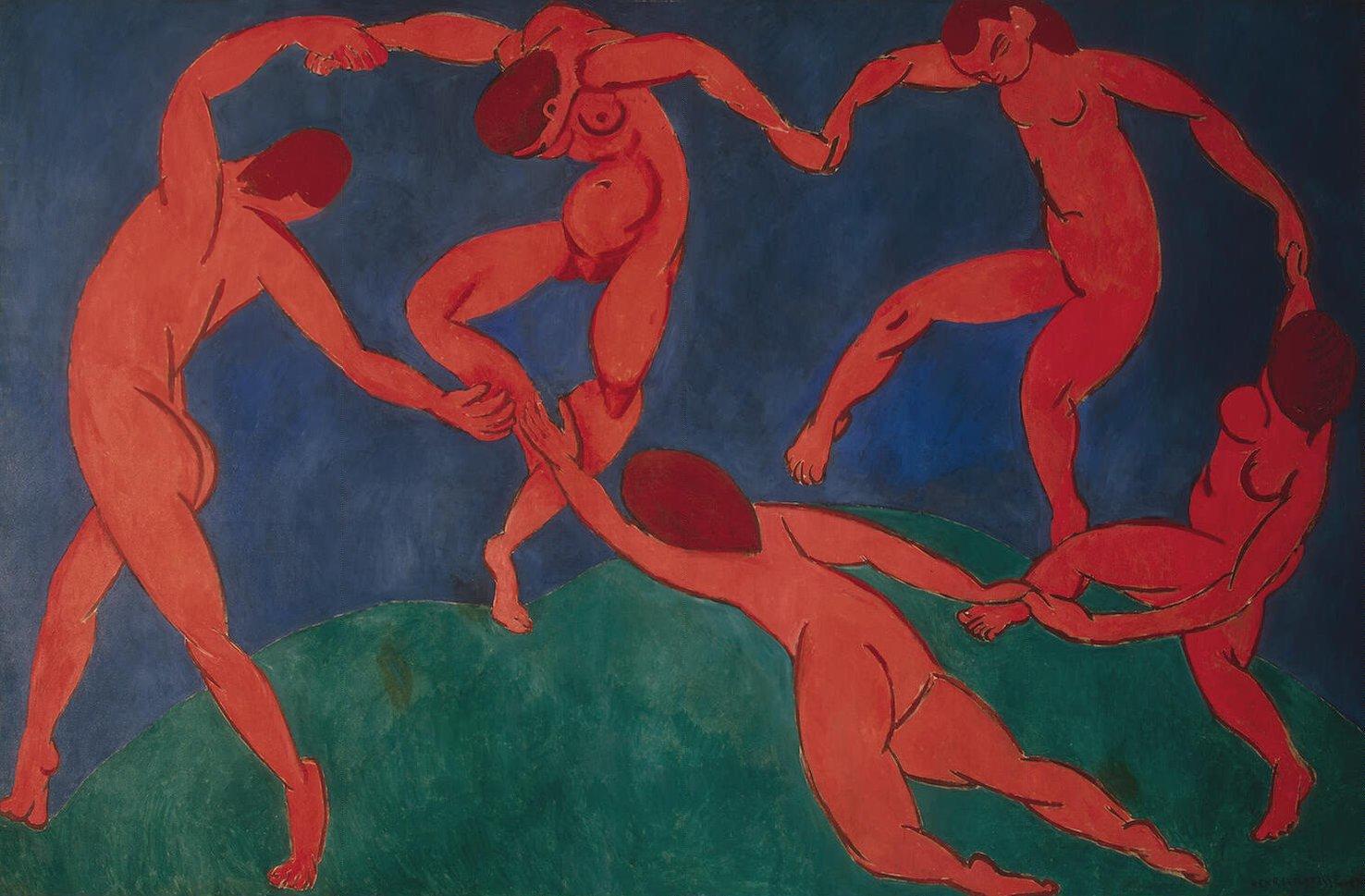
Dance and Music were two pieces of Matisse artwork that were commissioned by Russian businessman Sergei Shchukin. These post-Fauvism works show Matisse was reworking his style when he was done with being a ‘wild beast.’
Though Matisse was never officially a Cubist, Dance and Music are both pieces that bridge the gap between Matisse's Fauvist period and the later works done by the artist. For many, these are an evolution of his Fauvist style.
There are two versions of Dance, one with pinkish flesh-toned figures in less extreme poses and with a brighter background, and this high-contrast, high-energy version.
The Red Studio (L'Atelier Rouge)
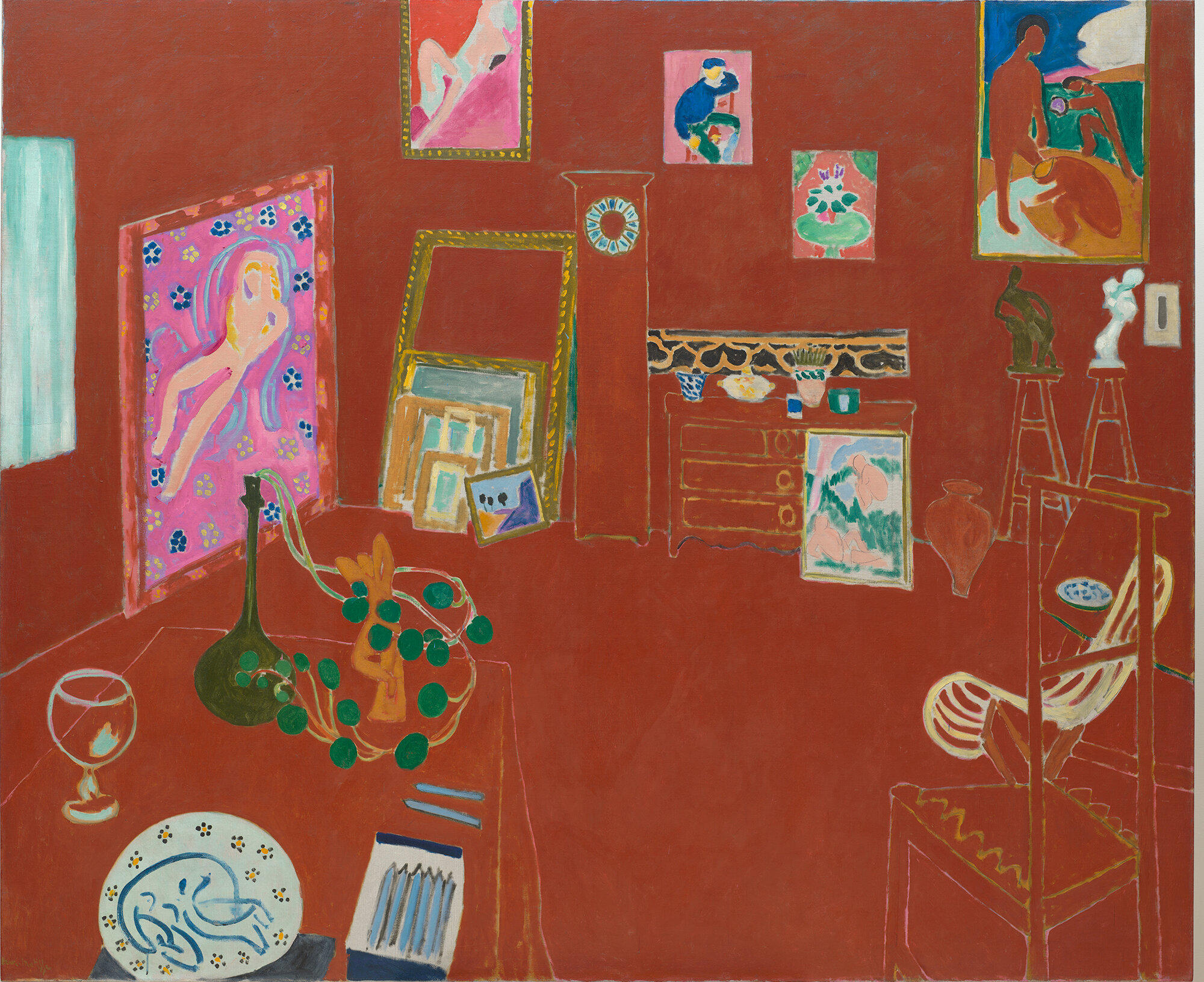
In addition to outlandish colour, Matisse plays with depth and space with objects in the studio blending into the background.
While not a self-portrait, The Red Studio acts as one in many ways because it's a painting of the artist's creative space with examples of Matisse's interests and influences adorning the space.
Although the Fauvist movement had “ended” by this point, Matisse was still clearly heavily exploring adjacent ideas. This painting is clearly a step away from Fauvism since it has more structure and weight, rather than wispy, dreamlike swaths with many, many clashing colours.
Learn more about Matisse's history, art history, and art techniques with painting classes Sydney here on Superprof.
The Moroccans

After he was done with Fauvism for certain, Matisse’s works began to have a wider palette in that he returned to using earth tones and darker colours in addition to accents of the bright hues he had grown adept in.
One of the best examples of the transition from Fauvism to Abstraction and Cubism in the art-sphere is this painting, showing the same type of wild composition you can expect in a Fauvist painting, but with a completely different approach to form and colour.
Picasso and Matisse influenced each other during this time, and you can see Picasso’s novel ideas being toyed with in this Cubist Matisse masterpiece!
Henri Matisse, the Artist
It’s important to know a little about the background of the artists you’re studying, since their lived experience, personality, and inner emotions inform every stroke of the brush.
Matisse was born 31 December 1869 in Le Cateau-Cambrésis, France to a wealthy family. His father was a grain merchant and his mother enjoyed recreational painting. He wasn't particularly interested in art during his childhood and actually studied law in Paris, returning to his hometown of Le Cateau-Cambrésis to become a court clerk and administrator.
While recovering from appendicitis at the age of 20 (1889), his mother gave him some art supplies to help him pass the time in recovery. You can imagine the profound effect this act had on the man's life given that he's famous for being an artist and not for his work in the courts. He described discovering painting as “a kind of paradise.”
His father was extremely disappointed. Once he'd recovered fully from appendicitis, Matisse decided to go back to Paris to continue his studies, but in art rather than law. He studied at the Académie Julian, a private art school in Paris, where he'd learn more about brushwork by painting landscapes and still lives. He would learn traditional painting techniques but would frequent the Louvre to copy works by artists like Manet and Chardin. Learn more about art techniques with painting courses on Superprof.
Matisse didn't have an interest in art until he was 20. When he discovered how much he loved it, he was a fiend for practising and learning as much as he could as quickly as he could.
Developing His Artistic Skills
Matisse was unique from his artistic contemporaries for three main reasons: he was wealthy, he had a strong background in a very structured discipline (law), and he was brand new to the artistic world, whereas most other artists had been practising and exploring for a number of years by age 20.
Because of these factors, Matisse methodically sought out teachers to help him develop his talents. His early paintings were more restrained, with earthy tones and skilled, yet uninspired, compositions.
In 1896, he met Australian painter John Russell, who introduced him to the works of Vincent van Gogh, and Matisse’s paintings changed drastically. Everything was much brighter and vivid, and he even painted a vase of sunflowers in homage to van Gogh.
Matisse was always very humble about his abilities and sought to improve his work by learning from others. The neo-impressionist painter Camille Pissarro suggested that Matisse could learn from William Turner by travelling to London and studying his works, so he did!
Henri Matisse loved the world of art and would regularly buy his fellow artists' pieces, including those from Rodin, Gauguin, and Paul Cézanne. He also treasured a van Gogh sketch Russell had gifted him. Due to financial hardship (Matisse kept buying too much art, and his wife’s family was financially ruined in the Humbert Affair), Henri switched to painting boring, safe, sellable art for a time.
Finding Fauvism
In his early years, Matisse was classified as an impressionist painter. Impressionism was an artistic movement created by Claude Monet where works represent fleeting moments with light and colour as the artist experienced it.
Ever the over-achiever, Matisse helped spearhead a new artistic style called Fauvism, which lasted from around 1900 to 1910. The members of the movement were called Les Fauves which means “The Wild Beasts” in French, and refers to their untamed art style.
Fauvism used Impressionism and Expressionism as jumping-off points. Fauvist style suspended real-life colours, compositions, and forms, instead embracing imagination and thinking outside the box. As with any art movement, there were some harsh critics. However, many critics and other artists were intrigued by these bold, rebellious artists!
While making the move to niche Fauvist art was a risky decision for the financially-pressed Matisse and his family, he simply couldn’t restrain himself any longer. During the movement, he met the Spanish painter Pablo Picasso. The two became lifelong friends and Picasso would go on to pioneer Cubism with fellow Fauvist Georges Braque!
Matisse was inspired by those who came before him. He took their ideas and ran with them, creating the Fauvist movement, which then inspired Cubism and Abstract art. Matisse certainly had a way with shaping the art sphere!
Later Years
Matisse was popular with a few Americans, like Dr. Albert Barnes, who commissioned Matisse to paint a mural in his mansion! During this time, Matisse expanded into sculpture, drawing, and collage and created limited-edition etching art books for collectors. His inventiveness helped him create art in new and interesting ways, especially in his later years.
Henri Matisse was diagnosed with abdominal cancer in 1941 in occupied France. Luckily, the occupying Germans were fond of his work and helped organise an operation to treat it. However, there were some complications post-surgery that left Matisse bedridden, but this wasn’t the first time Henri had been bedbound, and he knew he had to continue with art.
Matisse started cutting painted paper into abstract shapes and began creating decoupage, creating some of his famous cut-outs like Icarus and Blue Nude IV. On November 3rd, 1954, Matisse sadly suffered a heart attack and died.
Matisse's Legacy
Matisse, much like the Italian Renaissance painter Leonardo da Vinci, never stopped learning and developing new skills. He started as an Impressionist in Paris, founded Fauvism, and moved to Nice, where he continued to learn and develop as an artist. Even complications following a cancer surgery couldn’t stop him from creating.
Matisse remains one of the most famous artists of the 20th century and is thought of as a pioneer in modern art. Henri Matisse's story is interesting because it has a different beginning than many other famous artists of the time.

